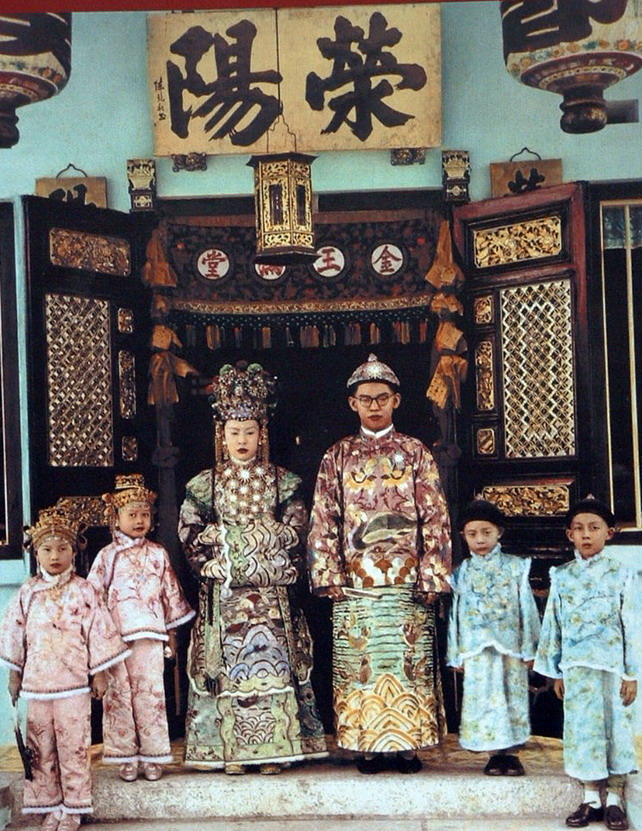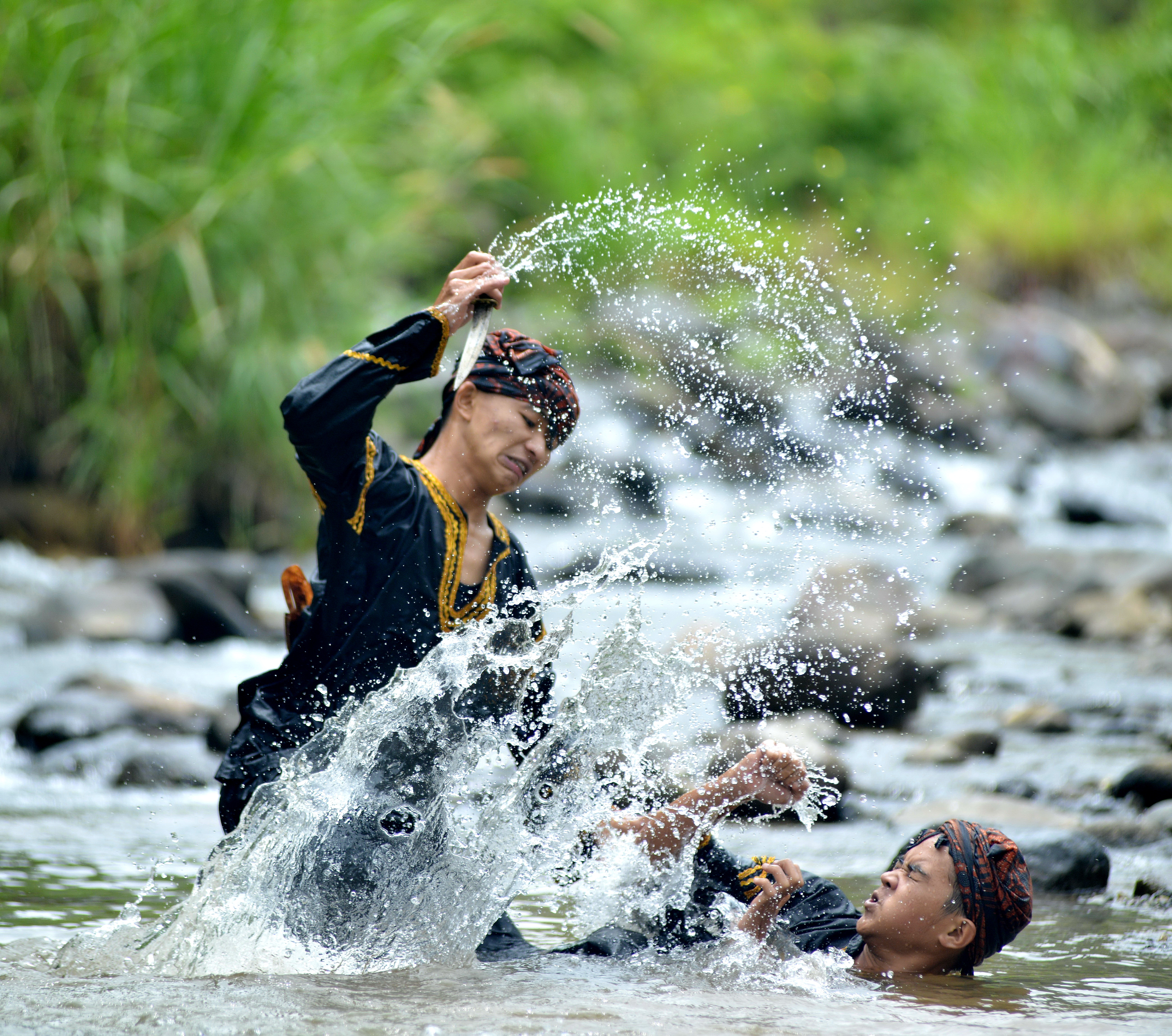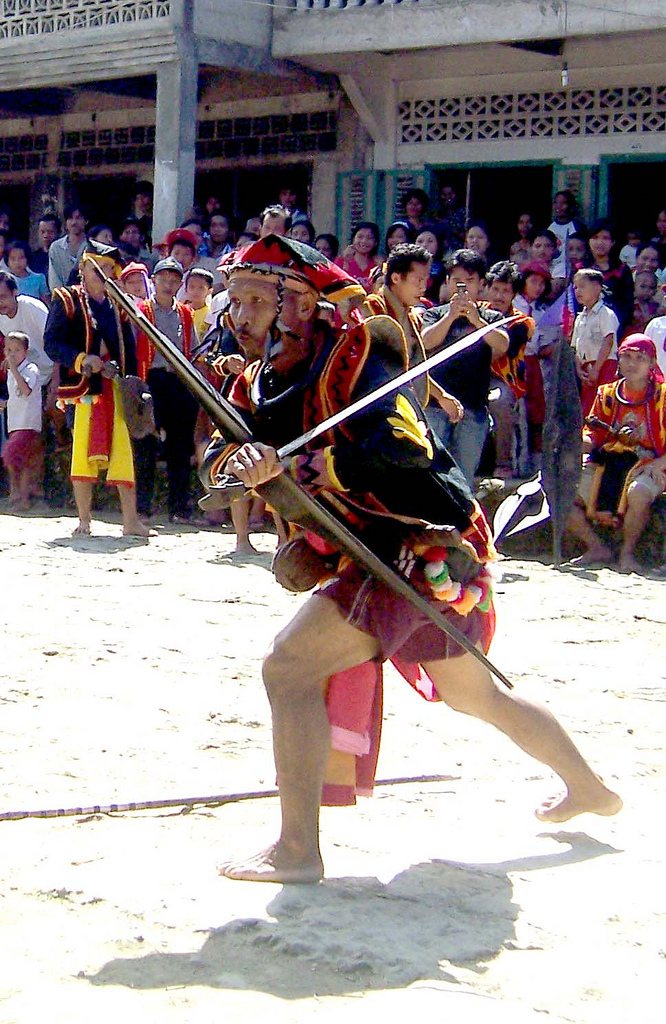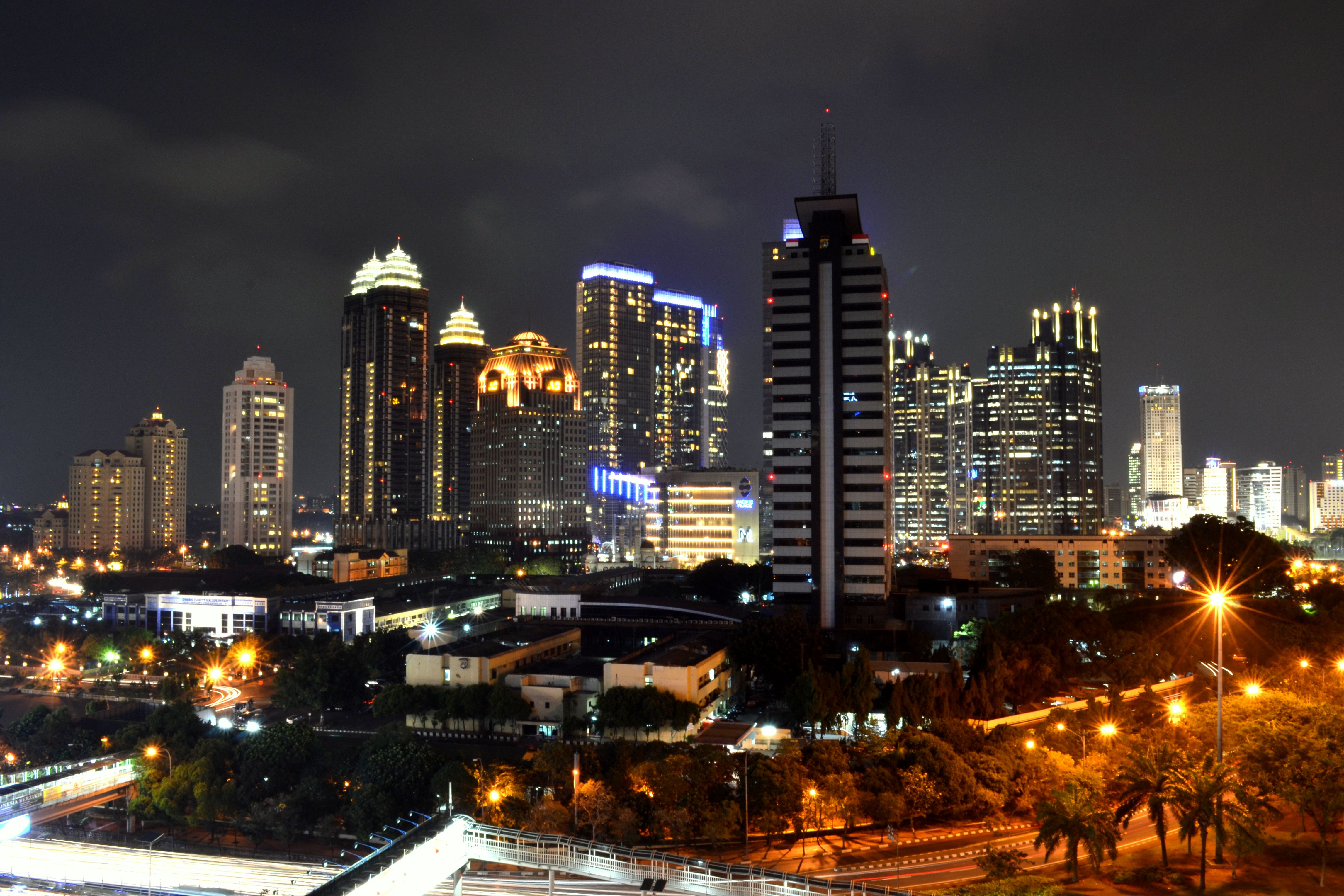|
Beksi
Beksi Silat is one of the most popular traditional martial arts ( Betawi: ''maen pukul'') of the Betawinese. This kuntao-silat hybrid style was originally developed in Kampung Dadap, a village in Kosambi district of Tangerang Regency, Banten Province, Indonesia. The founder of this style combined elements of his ancestral Chinese martial arts with the silat knowledge he received from his Betawi teachers. The style spread through his disciples to the coastal Betawinese and the Benteng Chinese around Kampung Dadap. Eventually, the silat style also reached Petukangan Selatan in South Jakarta and Batujaya in Tangerang. Etymology Opinions on the origin of the term ''Beksi'' vary. According to silat researcher G.J. Nawi, the term evolved from the phrase ''Bhe Si'', which means 'horse stance' in Hokkien. History Beksi Silat was originally created by Lie Tjeng Hok, a peranakan Chinese farmer who created a unique mixed martial art that combined elements from his family's martial arts and Be ... [...More Info...] [...Related Items...] OR: [Wikipedia] [Google] [Baidu] |
Kuntao
Kuntao or kuntau (wiktionary:拳, 拳wiktionary:道, 道, Pe̍h-ōe-jī: kûn-thâu, Tagalog language, Tagalog: kuntaw) is a Min Nan, Hokkien term for the martial arts of the Chinese community of Southeast Asia, specifically the Malay Archipelago. It is most commonly practiced in and associated with Indonesia, Malaysia, the Philippines and Singapore. Etymology There are no standard hanzi for kuntao, but the most common reading is "way of the fist", from ''kun'' 拳 meaning fist and ''tao'' 道 meaning way. Less common readings may use the character ''kun'' 棍 meaning staff, or ''tou'' 头 meaning head, so that it could be translated as "way of the staff" or roughly "knowledge of fists". In Fujian and other southern areas, this term was originally used for Chinese martial arts in general and was synonymous with ''quanfa'' (拳法, Pe̍h-ōe-jī: kûn-hoat). The word is recorded in Classical Malay and Indonesian language, Indonesian, making it the oldest known term for Chinese mar ... [...More Info...] [...Related Items...] OR: [Wikipedia] [Google] [Baidu] |
Betawi Language
Betawi, also known as Betawi Malay, Jakartan Malay, or Batavian Malay is the spoken language of the Betawi people in Jakarta, Indonesia. It is the native language of perhaps 5 million people; a precise number is difficult to determine due to the vague use of the name. Betawi Malay is a popular informal language in contemporary Indonesia, used as the base of Indonesian slang and commonly spoken in Jakarta TV soap operas. The name ''Betawi'' stems from Batavia, the official name of Jakarta during the era of the Dutch East Indies. Colloquial Jakarta Indonesian, a vernacular form of Indonesian that has spread from Jakarta into large areas of Java and replaced existing Malay dialects, has its roots in Betawi Malay. According to Uri Tadmor, there is no clear border distinguishing Colloquial Jakarta Indonesian from Betawi Malay. Background The origin of Betawi is of debate to linguists; many consider it to be a Malay dialect descended from Proto-Malayic, while others consider it to ha ... [...More Info...] [...Related Items...] OR: [Wikipedia] [Google] [Baidu] |
Peranakan
The Peranakans () are an ethnic group defined by their genealogical descent from the first waves of Southern Chinese settlers to maritime Southeast Asia, known as Nanyang (), namely the British Colonial ruled ports in the Malay Peninsula, the Indonesian Archipelago as well as Singapore. Peranakan culture, especially in the dominant Peranakan centres of Malacca, Singapore, Penang and Medan, is characterized by its unique hybridization of ancient Chinese culture with the local cultures of the Nusantara region, the result of a centuries-long history of transculturation and interracial marriage. Immigrants from the southern provinces of China arrived in significant numbers in the region between the 14th and 17th centuries, taking abode in the Malay Peninsula (where their descendants in Malacca, Singapore and Penang are referred to as Baba–Nyonya); the Indonesian Archipelago (where their descendants are referred to as Kiau–Seng); and Southern Thailand, primarily in Phuket, Tr ... [...More Info...] [...Related Items...] OR: [Wikipedia] [Google] [Baidu] |
Sport In Indonesia
Sports in Indonesia are popular from both the participation and spectating aspect. Some popular sports in Indonesia are football, volleyball, basketball, badminton, and the native Indonesian martial art pencak silat. Badminton is arguably Indonesia's most successful sport. Indonesia has won gold medals in badminton in every Olympic Games since the sport was first introduced to the Olympics in 1992, with the exception of the 2012 Summer Olympics. Indonesia became the first grand winner in Badminton Olympics back then 1992. Indonesia regularly participates in the Thomas Cup, Uber Cup, and Sudirman Cup badminton championships, then became the first nation in history to complete those three titles. Indonesia also regularly participates in regional multi-events sport, such as the Southeast Asian Games, Asian Games, and Olympic Games. Indonesia is one of the major sport powerhouses in the Southeast Asian region, winning the Southeast Asian Games 10 times since 1977. Sporting events in ... [...More Info...] [...Related Items...] OR: [Wikipedia] [Google] [Baidu] |
Indonesian Culture
The culture of Indonesia has been shaped by long interaction between original indigenous customs and multiple foreign influences. Indonesia is centrally-located along ancient trading routes between the Far East, South Asia and the Middle East, resulting in many cultural practices being strongly influenced by a multitude of eastern religions, religions, including Buddhism, Christianity, Confucianism, Hinduism, and Islam, all strong in the major trading cities. The result is a complex cultural mixture, often different from the original indigenous cultures. Examples of the fusion of Islam with Hinduism include Javanese Abangan belief. Balinese dances have stories about ancient Buddhist and Hindu Monarchy, kingdoms, while Islamic art forms and architecture are present in Sumatra, especially in the Minangkabau people, Minangkabau and Aceh regions. Traditional art, music and sport are combined in a martial art form called Pencak Silat. The Western world has influenced Indonesia in sci ... [...More Info...] [...Related Items...] OR: [Wikipedia] [Google] [Baidu] |
Silat
is the collective term for a class of indigenous martial arts from the Nusantara and surrounding geocultural areas of Southeast Asia. It is traditionally practised in Brunei, Indonesia, Malaysia, Singapore, Southern Thailand, Southern Philippines and Southern Vietnam. Hundreds of styles () and schools () tend to focus either on strikes, joint manipulation, weaponry, or some combination thereof. The word is used by Malay-speaking countries throughout Southeast Asia, but is officially called in Indonesia. The term was adopted globally in reference to being performed as professional competitive sport, similar to ''wushu''. Regional dialect names including in Sundanese, in Minangkabau, or in the lower speech of Sundanese, ''gayong'' or in parts of Sumatra, Singapore, and Malaysia, or in Southern Thailand and in Southern Philippines. is one of the sports included in the Southeast Asian Games (SEA Games) and other region-wide competitions. first made its debut in ... [...More Info...] [...Related Items...] OR: [Wikipedia] [Google] [Baidu] |
Indonesian Martial Arts
Indonesian martial arts includes a variety of fighting systems native to or developed in the archipelago of Indonesia, both the age-old traditional arts, and the more recently developed hybrid combatives. In the Indonesian language the term ''bela-diri'' (lit. self-defense) is used to mean martial art, and in essence the Indonesian fighting arts are meant as one's defence against perceived threat and assault. Other than physical training, they often include spiritual aspects to cultivate inner strength, inner peace and higher psychological ends. Today, Indonesian fighting styles are synonymous with pencak silat, a term coined for the martial arts of the Indonesian archipelago. Nevertheless, a number of fighting arts in Indonesia are not included within the category of silat. Western misconception links silat with "jungle tribes" but in actuality, pencak silat was neither created nor traditionally practised by Indonesia's tribal inhabitants, many of whom have unique martial arts ... [...More Info...] [...Related Items...] OR: [Wikipedia] [Google] [Baidu] |
Jabodetabek
The Jakarta metropolitan area or Greater Jakarta, known locally as Jabodetabek (an acronym of Jakarta–Bogor–Depok–Tangerang–Bekasi), and sometimes extended to Jabodetabekjur (with the acronym extended to include part of Cianjur Regency), or Jabodetabekpunjur (further extended to include Puncak and the Cipanas district), is the most populous metropolitan area in Indonesia. It includes the national capital (Jakarta Special Capital Region, as the core city) as well as five satellite cities and three complete regencies. The original term "Jabotabek" dated from the late 1970s and was revised to "Jabodetabek" in 1999 when "De" (for "Depok") was inserted into the name following its formation. The term "Jabodetabekjur" or "Jabodetabekpunjur" was legalised on the Presidential Regulation Number 54 of 2008, although the name Jabodetabek is more commonly used. The area comprises Jakarta Special Capital Region and parts of West Java and Banten provinces, specifically the three rege ... [...More Info...] [...Related Items...] OR: [Wikipedia] [Google] [Baidu] |
Horse Stance
The horse stance (sometimes called horse riding stance) is a common posture in Asian martial arts and takes its name from the position assumed when riding a horse. It is called ''mǎbù'' (馬步) in Chinese, in Japanese, and ''juchum seogi'' (주춤 서기) or ''annun seogi'' (lit. sitting stance) in Korean. This stance can not only be integrated into fighting but also during exercises and forms. It is most commonly used for practicing punches or to strengthen the legs and back. The modified form of horse stance, in which heels are raised, is fighting stance in International Karate Tournaments. The Chinese form of horse stance is fighting stance which changes into front stance while using hip rotation to develop punching force. Chinese martial arts ''Mabu'' is used for endurance training as well as strengthening the back and leg muscles, tendon strength, and overall feeling and understanding of "feeling grounded". It is a wide, stable stance with a low center of gravity.Feet a ... [...More Info...] [...Related Items...] OR: [Wikipedia] [Google] [Baidu] |
Hokkien
The Hokkien () variety of Chinese is a Southern Min language native to and originating from the Minnan region, where it is widely spoken in the south-eastern part of Fujian in southeastern mainland China. It is one of the national languages in Taiwan, and it is also widely spoken within the Chinese diaspora in Singapore, Indonesia, Malaysia, the Philippines and other parts of Southeast Asia; and by other overseas Chinese beyond Asia and all over the world. The Hokkien 'dialects' are not all mutually intelligible, but they are held together by ethnolinguistic identity. Taiwanese Hokkien is, however, mutually intelligible with the 2 to 3 million speakers in Xiamen and Singapore. In Southeast Asia, Hokkien historically served as the '' lingua franca'' amongst overseas Chinese communities of all dialects and subgroups, and it remains today as the most spoken variety of Chinese in the region, including in Singapore, Malaysia, Indonesia, Philippines and some parts of Indochina (part ... [...More Info...] [...Related Items...] OR: [Wikipedia] [Google] [Baidu] |
Betawi People
Betawi may refer to: *Betawi people *Betawi language * Betawi cuisine *Betawi mask dance See also * Batavia (other) * Batavi (other) Batavi may refer to: *Batavi (Germanic tribe) **Revolt of the Batavi *Batavi (military unit) *Batavi (software), e-commerce software * ''Batavi'' (album), album by Dutch pagan/folk metal band Heidevolk See also *Batavia (other) Batavia m ... {{disambig Language and nationality disambiguation pages ... [...More Info...] [...Related Items...] OR: [Wikipedia] [Google] [Baidu] |







.png)